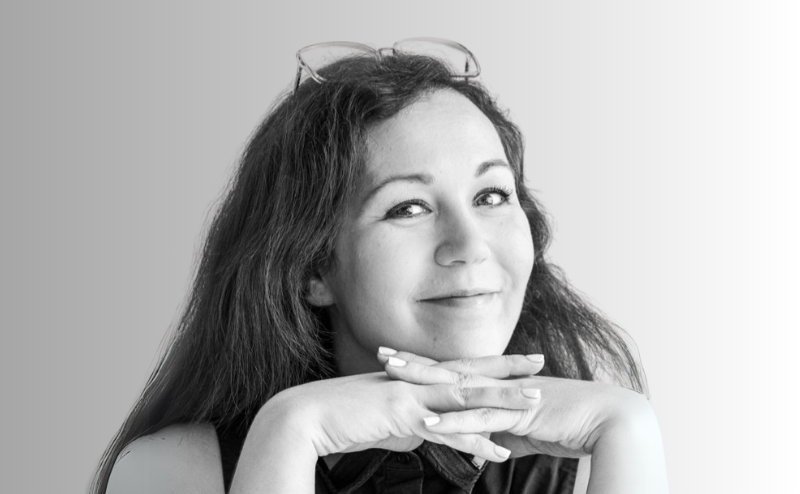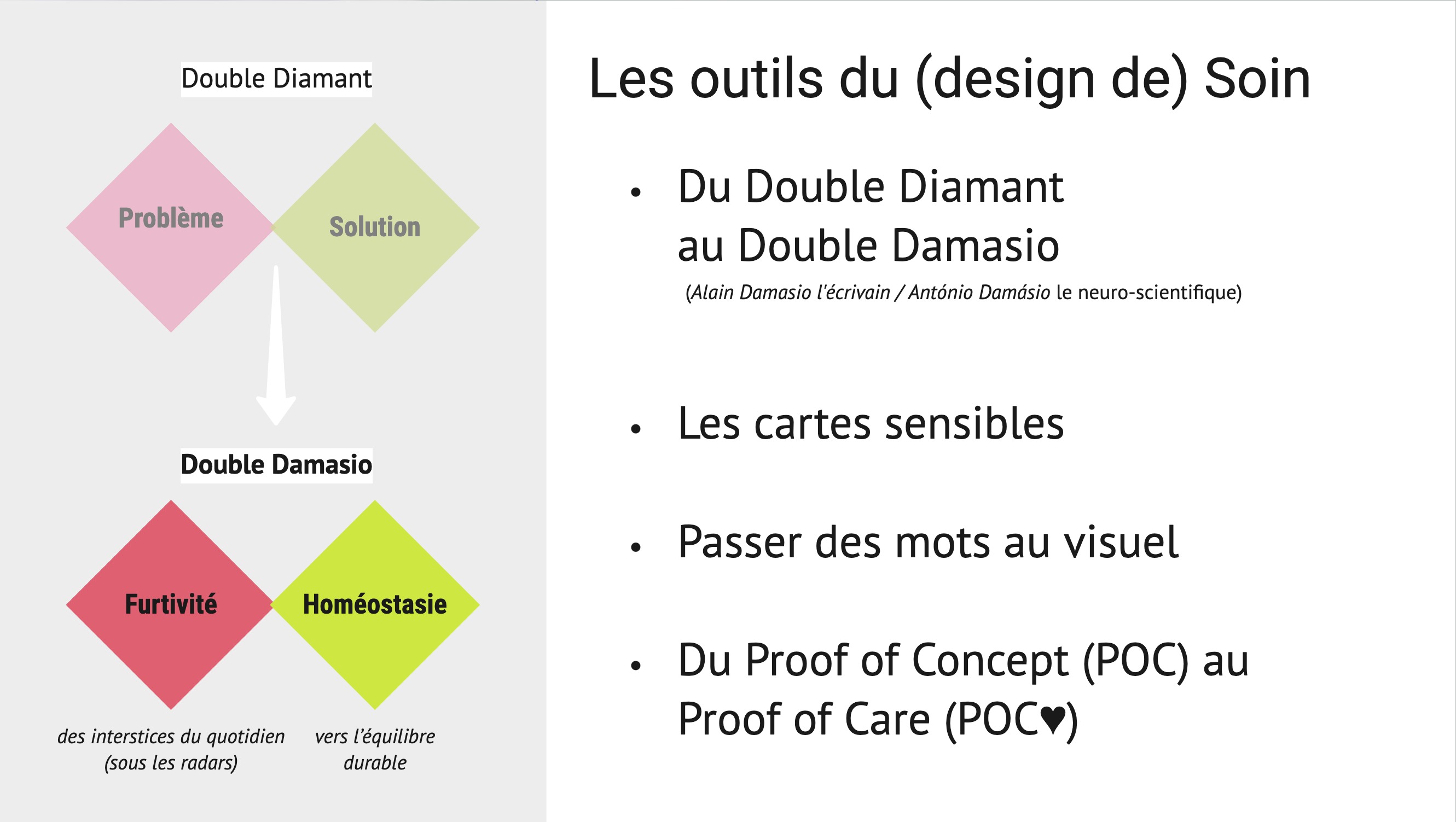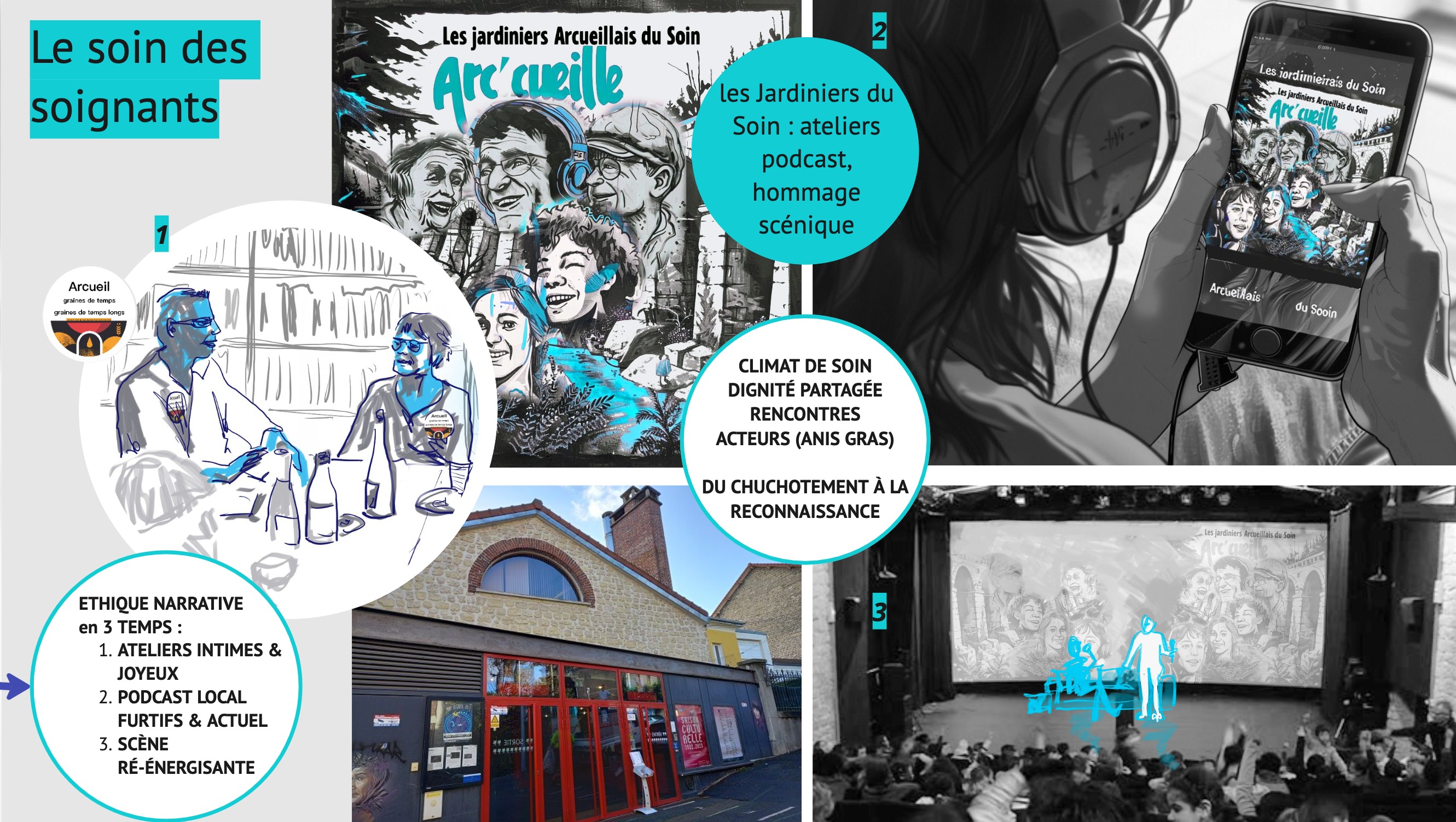News

Design for care: better design for better care
Care design is an ethical approach centered onempathy, benevolence and the consideration of human needs in their emotional, social and physical dimensions. It aims to design experiences, services and environments that respond to the vulnerabilities, expectations and realities of individuals and their ecosystems.
Nadège Bide has been a designer for over 20 years. A graduate of the Interactive Digital Communication Engineering Manager course in 2015, she joined GOBELINS after more than 10 years of design practice in the textile and fashion industry.
Now a UX design researcher and strategist, she has also been coaching teams for many years.
She has developed an expertise in care and ethical design, and today shares with us her vision of care applied to design, and how this approach has transformed her professional practice.
What is design by care?
Care can be literally translated as "taking care" in French.Care" (social or relational care) is often contrasted with "cure" (technical or medical care), i.e. the act of treating or curing.
In French, the lexical proximity of "soin" and "soigner" tends to minimize the notion of attention associated with care, which makes all the difference.
It's about rethinking the role of the designer as one who takes care (of users, targets and environments...) to propose design objects.
Design by care goes beyond problem-solving (dear to designers), and focuses on vulnerabilities as a universal condition, considering that everyone, at some point, may find themselves in a situation where they need support or understanding.
Empathy and benevolence are a priority. The designer willalso take the environment into account, with an ecological approach or at least a reflection on the project's impact over time.
Inclusion is also a fundamental concern. We have to make sure we' re addressing everyone, not just the norm. We often think that the norm is what will satisfy the greatest number, but with care design, we try to address everyone, without exception.

Les Jardiniers d'Arcueil" project - Care and Design meet
How did you become interested in ethics in design?
As a UX designer, I have a natural sensitivity to people, and will interact with users to better understand their needs, cultivating empathy.
I supervise teams and try to take a caring approach to management. Beyond the word "benevolence", which is becoming increasingly fashionable for reasons of corporate strategy, it's a real posture to implement when you want to keep people engaged for the right reasons.
Theacceleration of technologies and thearrival of AI have also raised ethical questions about their use.
As soon as a new technology appears, it's necessary to ask whether it's really indispensable, to question its impact and to think about how it can be used positively.

Care design tools
What qualities are needed to practice CARE design?
- Empathy : putting yourself in the other person's shoes is fundamental to design practice.
- Active listening: listening without prejudice while questioning one's own biases.
- Critical thinking: knowing how to identify what is invisible, and always questioning one's methods and practices in order to spot the possible suffering or mistreatment that can sometimes be inflicted while trying to do the right thing.
- Systemic vision: understanding economic, political and organizational issues in complex environments. This approach includes analysis of power structures, governance and internal dynamics.
- Adaptability: being able to adapt to different contexts and interlocutors , and staying connected to the realities of teams in the field, not just decision-makers.
For example, during a mission with theNGO ALIMA (The Alliance for International Medical Action) in areas of great vulnerability (wars, epidemics, malnutrition, etc.), the notion of caring was crucial.
As a designer working from a secure environment, my approach consisted in gathering the needs of teams on the ground in Africa, without adopting a condescending stance or putting them at odds with their management.

Les Jardiniers d'Arcueil" project - Sensitive map
How has CARE design changed your practices?
This ethical and caring approach to design has enabled me to reconnect with a more sensitive and creative approach to design.
Digital design has become largely automated in recent years, and has taken on an increasingly technical dimension (with design systems, design ops, etc.). Working in the field, I've come to realize that creativity is essential in healthcare. It's not enough to rely on methodology and new technologies to tackle these issues.
For example, I was commissioned, along with 7 other non-designer colleagues, by the Arcueil town council to work on the town's vulnerabilities. We combined a sensitive approach with classic UX research to create a sensitive map.
Rather than proposing a topographical survey, we each drew a map of the town based on our feelings. The aim of this approach was to capture a subjective, embodied experience of the city.
Design par le care also enabled me to reinforce my collaborative approach, with a particular focus on the group. To strengthen cohesion in a team, it's essential to give individuals the opportunity to express their motivations, expectations and group vulnerabilities.

Les Jardiniers d'Arcueil" project : Proof Of Care n°1 : Vertiges et Liens: fête des horizons
What role do you see CARE design playing in the years ahead?
I don't claim to be an absolute expert on the subject. There's a lot of talk about well-being at work and taking care of employees, but these issues are often approached with a marketing objective in mind. It's not always easy to find one's position and demonstrate one's sincerity.
My approach is almost todo Care without saying it. I could be wrong, but in my opinion, the future of care in design is to become a real state of mind, present at every stage of a designer's work, rather than an ultimate method or, even worse, a sales strategy.
Asking the question of the impact our choices have on others when designing a product or a project should be a prerequisite, even if it isn't yet the case.
The widespread adoption of this philosophy will require a real effort to raise awareness. For companies to take this subject seriously, care would almost have to become a parameter for winning a tender, in the same way as carbon impact becomes one, for example.
Furthermore, it would be essential to integrate the teaching of care in schools as a qualitative and ethical approach to design.
What are the challenges of care?
The main difficulty with care design is putting it into practice. You have to be able to move on from theory to pragmatic application. As a designer, you're expected to master concept, prototyping and production on a larger scale.
My naive observation is that many healthcare professionals have ideas for improvements that they struggle to make tangible (due to a lack of time, resources and sometimes method).
This is where the designer can become an ally, as long as he or she doesn't come in as a new know-it-all, but rather offers a complementary outside viewpoint and, above all, takes advantage of the technical side of the business.

Les Jardiniers d'Arcueil" project : Proof Of Concept n°2 : Les Jardiniers du Soin : podcast workshops, stage tribute
What resources do you recommend for discovering CARE design?
Some books :
- "La Charte du Verstohlen" by Cynthia Fleury and Antoine Fenoglio: an inspiring approach to the philosophy of care and our collective responsibility as designers.
- "Éthique et Design: Pour un climat de soin", again by Cynthia Fleury and Antoine Fenoglio : this key work explore show design in all its forms (space design, service design....) can foster an ethical and sensitive approach.
- "What is care? Concern for others, sensitivity, responsibility" by Pascale Molinier, Patricia Paperman and Sandra Laugier: essential reading for understanding the theoretical and practical foundations of care.
- "Les femmes du lien" by Vincent Jarousseau and Thierry Chavant: a superb book that blends photography and comics, highlighting the often-invisibilized care professions. This book is worth all the theories, it's a very concrete illustration of care.
Some online resources :
- The Ethical Designers community: committed to ethical design practices, this is a great resource for content on standards and digital accessibility.
- The Labo Furtifs collaborative wiki: this exploration space lets you share responsible and stealth design initiatives.
- La Chaire de Philosophie à l'Hôpital : a selection of articles, videos and podcasts on philosophy, health and care to challenge the digital world.
- Eva Sadoun 's"Loin des yeux, Loin du care" podcast : a fascinating series questioning our relationship with care in a changing world.
 7
7












No comment
Log in to post comment. Log in.